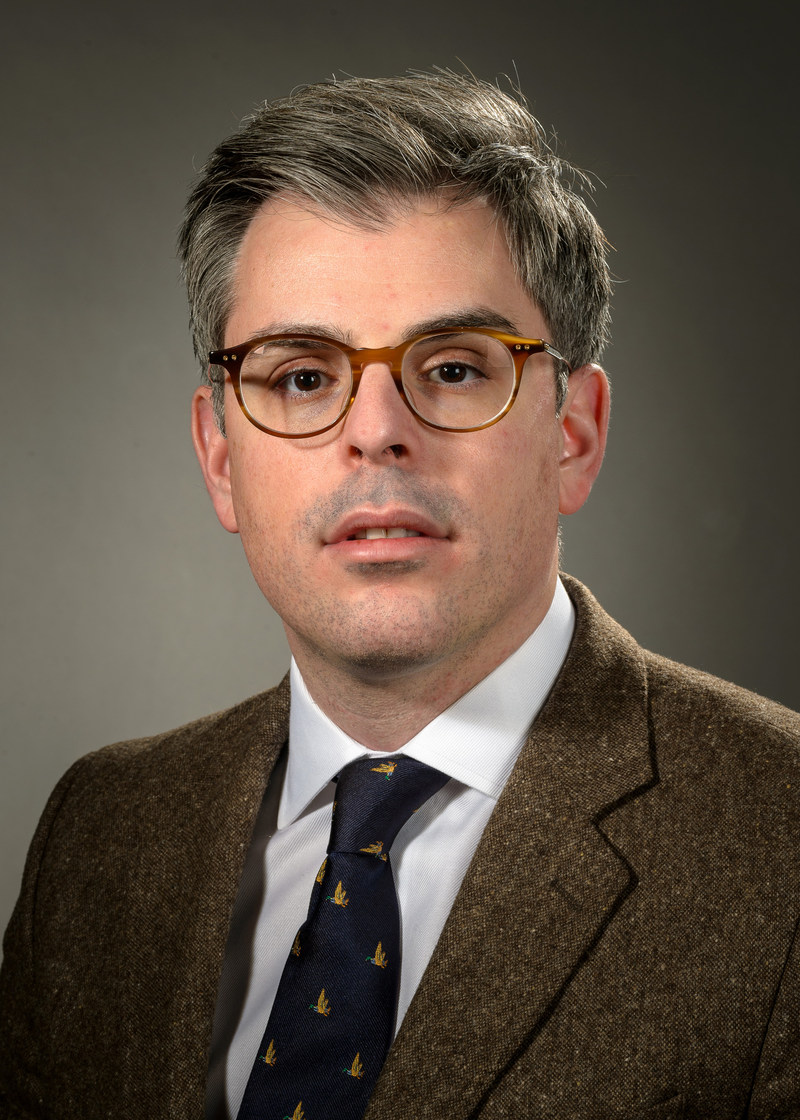MANHASSET, N.Y., March 27, 2018 /PRNewswire-USNewswire/ — Feinstein Institute for Medical Research researcher Petros Constantinos Benias, MD, and collaborators have identified that layers of the body long thought to be dense, connective tissues are actually interconnected, fluid-filled compartments, categorizing this part of the body as an organ. This discovery, published today in Scientific Reports, could lead to better understanding and improved treatments for cancer and other inflammatory conditions.

Dr. Petros Benias
For years we have known that more than half the fluid in the body is within cells, and approximately a seventh of the fluid is inside the heart, blood vessels, lymph nodes, and lymph vessels – the remaining fluid is “interstitial.” The interstitium, or connective tissue, up to now, has been thought mostly to exist between cells defined historically as a “third space”, but this does not account for the massive amount of fluid stored within the human body outside of the vascular system. Occasionally the concept that there is a larger interstitial space has been generally referred to, though its anatomic or histologic features have never been described. The Scientific Reports paper is the first to define the interstitium as an organ and as one of the largest in the body. The interstitium is a series of spaces, supported by a meshwork of strong and flexible connective tissue proteins found below the skin’s surface, lining the digestive tract, lungs and urinary systems, and surrounding arteries, veins, and the fascia between muscles. In the digestive tract, for example, the entire submucosal space or layer of the stomach lining has been redefined by this work as a complex interstitium that communicates with the lymphatic system. This space moves fluid throughout the body and is the source of lymph, a fluid in the body that aids immune cells that generate inflammation. Researchers involved in this study believe this could explain why cancer that invades this interstitial space becomes much more likely to spread. The researchers also found that the cells in the interstitium change with age, which may contribute to the wrinkling of skin, the stiffening of limbs, and the progression of fibrotic, sclerotic and inflammatory diseases.
Techniques in processing tissue from surgery and biopsies failed to identify this space because it was artificially collapsed during the fixation process, or when tissue is prepared to view under a microscope. As a result, scientists often interpreted the appearance of the submucosal space and this interstitium as a dense network of collagen or protein found in connective tissue, when in fact it was quite the opposite.
“This discovery is extremely exciting because we’ve defined novel microanatomy and have laid the groundwork for how this may begin to explain cancer spread, inflammation and scarring of connective tissue. This discovery will open up new research pathways for inflammation and cancer progression,” said Petros Constantinos Benias, MD, co-lead author of the study, member of the Feinstein Institute and assistant professor at Donald and Barbara Zucker School of Medicine at Hofstra/Northwell Health. “We are optimistic that with what we learned, we’ll soon be able to study and target the interstitial space for diagnosis of disease and perhaps for novel personalized treatments.”
Part of the reason why researchers were able to make this discovery is the progression of technology. Historically, tissue has been fixed and studied by way of a conventional microscope. This process dramatically alters the structure of the tissue and artificially collapses the interstitium. The research team, instead of using traditional microscopes to examine the interstitium used cutting-edge technology- probe-based confocal laser endomicroscopy which allows human tissue to be examined on a cellular level, live at the time of endoscopy. Dr. Benias collaborated with Mount Sinai Beth Israel Medical Center, NYU School of Medicine, and University of Pennsylvania. This work was funded in part by a National Institutes of Health grant (DK081523).
About the Feinstein Institute
The Feinstein Institute for Medical Research is the research arm of Northwell Health, the largest healthcare provider in New York. Home to 50 research laboratories and to clinical research throughout dozens of hospitals and outpatient facilities, the Feinstein Institute includes 4,000 researchers and staff who are making breakthroughs in molecular medicine, genetics, oncology, brain research, mental health, autoimmunity, and bioelectronic medicine – a new field of science that has the potential to revolutionize medicine. For more information about how we empower imagination and pioneer discovery, visit FeinsteinInstitute.org.
GOT NEWS? click here
Google News, Bing News, Yahoo News, 200+ publications
Contact: Heather E. Ball Mayer
516-465-7917
[email protected]
![]() View original content with multimedia:http://www.prnewswire.com/news-releases/feinstein-institute-researcher-defines-a-part-of-the-body-as-an-organ-300620438.html
View original content with multimedia:http://www.prnewswire.com/news-releases/feinstein-institute-researcher-defines-a-part-of-the-body-as-an-organ-300620438.html
SOURCE The Feinstein Institute for Medical Research
Related Links
http://www.feinsteininstitute.org






